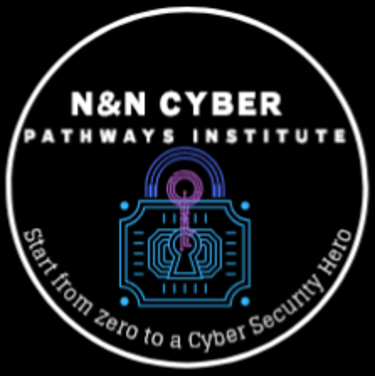Ethical Hacking
Offered by: N&N Cyber Pathways Institute
Duration: 8–10 Weeks (Instructor-Led / Online or Hybrid)
Level: Intermediate to Advanced
Prerequisites:
Basic understanding of networking, operating systems, and cybersecurity fundamentals.
Course Overview
The Ethical Hacking course trains learners to think like hackers—but ethically. Participants learn how to identify vulnerabilities, exploit weaknesses safely, and protect systems from malicious attacks. The course emphasizes hands-on practice with industry-standard tools, preparing learners for careers in penetration testing, vulnerability assessment, and cyber defense.
Learning Objectives
By the end of this course, learners will be able to:
Understand ethical hacking principles and legal considerations.
Perform vulnerability assessments and penetration tests.
Use hacking tools to identify and exploit system weaknesses.
Secure networks, web applications, and systems from real-world attacks.
Prepare for professional certifications like CEH (Certified Ethical Hacker).
Course Modules
Module 1: Introduction to Ethical Hacking
Definition and scope of ethical hacking
Legal and ethical considerations
Hacker types: Black Hat, White Hat, Grey Hat
Overview of the hacking process and methodology
Module 2: Reconnaissance and Footprinting
Gathering information about targets
Open-source intelligence (OSINT) techniques
Scanning and enumeration basics
Tools: Nmap, Whois, Maltego
Module 3: Scanning and Vulnerability Analysis
Network scanning techniques
Identifying vulnerabilities in systems and applications
Tools: Nessus, OpenVAS, Nikto
Analyzing results and prioritizing risks
Module 4: System Hacking and Exploitation
Understanding system vulnerabilities
Exploiting Windows and Linux systems
Privilege escalation techniques
Password attacks and cracking methods
Module 5: Malware Threats and Social Engineering
Types of malware: viruses, worms, Trojans, ransomware
Phishing, pretexting, and human manipulation
Preventive measures and awareness campaigns
Module 6: Network Hacking
Attacking wired and wireless networks
Packet sniffing, session hijacking, and Man-in-the-Middle attacks
Securing networks against intrusions
Tools: Wireshark, Aircrack-ng, Ettercap
Module 7: Web Application Hacking
Common web vulnerabilities (OWASP Top 10)
SQL Injection, Cross-Site Scripting (XSS), and CSRF
Exploitation and defense strategies
Tools: Burp Suite, OWASP ZAP
Module 8: Penetration Testing Methodology
Planning and scoping a pen test
Conducting tests safely and ethically
Reporting vulnerabilities and mitigation strategies
Real-world penetration testing scenarios
Module 9: Capstone Project
Conduct a full penetration test on a simulated environment
Identify vulnerabilities and propose fixes
Submit a professional penetration test report
Presentation and peer/instructor feedback
Course Features
Hands-on labs and hacking simulations
Guidance from certified ethical hacking professionals
Real-world scenarios to develop practical skills
Certificate of Completion from N&N Cyber Pathways Institute
Preparation for CEH or other ethical hacking certifications
Assessment
Quizzes after each module
Practical lab exercises
Final penetration testing capstone project
Contact
Get in touch on Social Media
Tel:
© 2025. All rights reserved.
Email:
